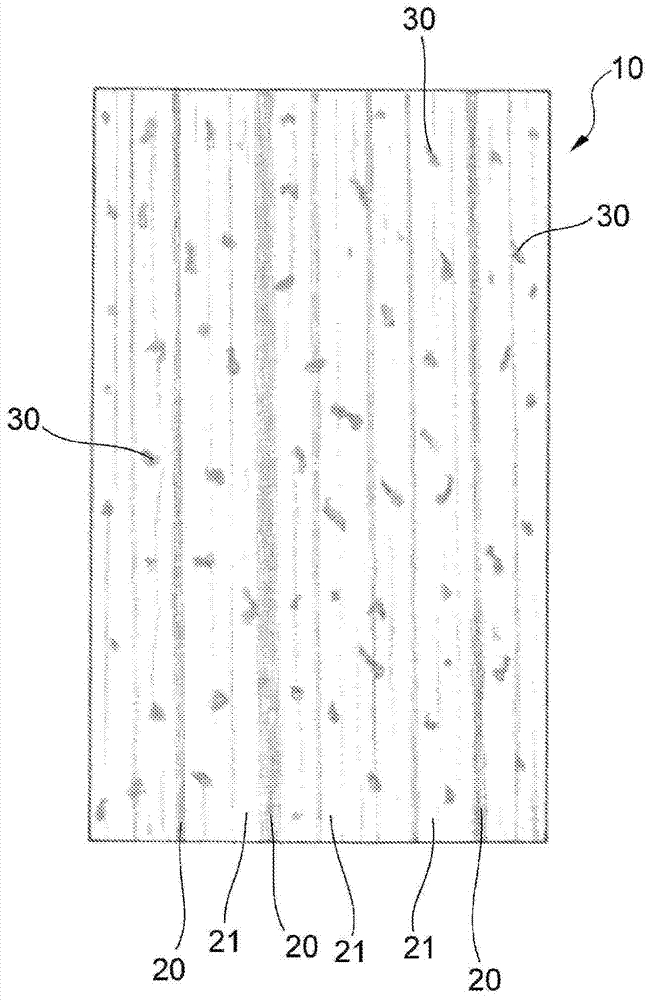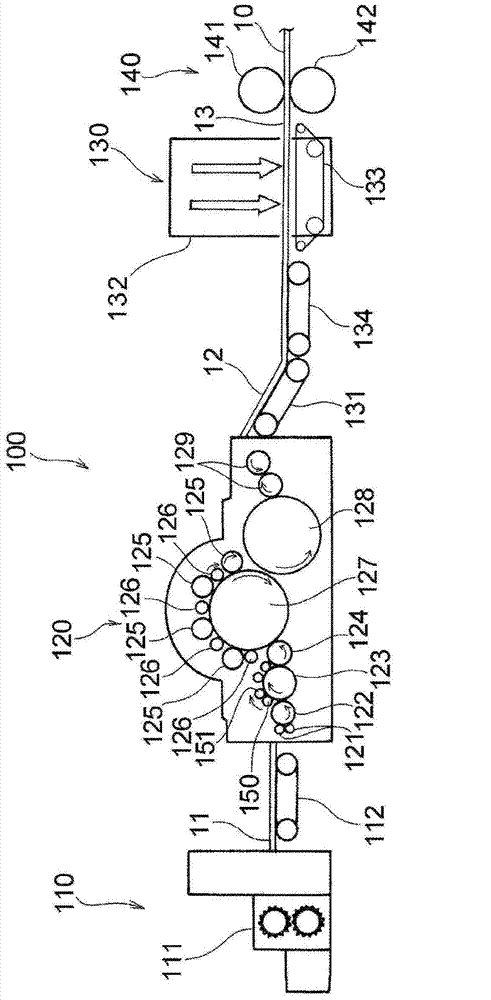Non-woven fabric and manufacturing process therefor
A manufacturing method and technology of non-woven fabrics, applied in textiles and papermaking, non-woven fabrics, liquid/gas/vapor treatment of indefinite-length textile materials, etc., can solve the problems of poor touch of non-woven fabrics and other issues
- Summary
- Abstract
- Description
- Claims
- Application Information
AI Technical Summary
Problems solved by technology
Method used
Image
Examples
Embodiment 1
[0106] As the first raw material fiber, a concentric core-sheath type conjugate fiber having a core made of PET and a sheath made of PE was used. The fiber had a length of 51 mm and contained 0.5% of titanium oxide as a white pigment. In addition, the thickness of this fiber is as shown in Table 1.
[0107] In addition to the first raw material fiber, as the second raw material fiber, a core-sheath type conjugate fiber obtained by defibrating and regenerating the end of the nonwoven fabric produced in the present Example was used. For defibration, a device (not shown) equipped with a feed roller provided with a head for supplying a nonwoven fabric, a front cylinder for winding a saw-shaped thread, and an air blowing mechanism, called a defibrator, was used. In the regenerated core-sheath composite fibers, the remnants of the fiber bond can be seen locally. The ratio of the 2nd raw material fiber is the value shown in Table 1 with respect to the whole raw material fiber. The...
Embodiment 2 to 11 and comparative example 1 to 8
[0113] A nonwoven fabric was obtained in the same manner as in Example 1 except that the conditions shown in Table 1 were used.
[0114] 〔Evaluation〕
[0115] The evaluation shown in Table 1 was performed about the nonwoven fabric obtained by the Example and the comparative example. In this table, the number of small fiber lumps is 0.5 mm for the area determined by image analysis 2 The results obtained from the statistics of the above small fiber blocks. In addition, the skin feel was evaluated by the following method.
[0116] That is, a sample was prepared, and the skin touch was evaluated using the average score of the touch of 10 panelists. Specifically, a box into which the sample could not be seen, and only two hands could insert, was placed in the box by the person to be evaluated, and the panelists were exposed to a 20 cm x 30 cm piece of sample on a thick paper placed in the box, and then scored on a scale of 1 to 10. 10-level evaluation of its feel. The group me...
PUM
| Property | Measurement | Unit |
|---|---|---|
| Diameter | aaaaa | aaaaa |
| Length | aaaaa | aaaaa |
| Reflectivity | aaaaa | aaaaa |
Abstract
Description
Claims
Application Information
 Login to View More
Login to View More - R&D
- Intellectual Property
- Life Sciences
- Materials
- Tech Scout
- Unparalleled Data Quality
- Higher Quality Content
- 60% Fewer Hallucinations
Browse by: Latest US Patents, China's latest patents, Technical Efficacy Thesaurus, Application Domain, Technology Topic, Popular Technical Reports.
© 2025 PatSnap. All rights reserved.Legal|Privacy policy|Modern Slavery Act Transparency Statement|Sitemap|About US| Contact US: help@patsnap.com



